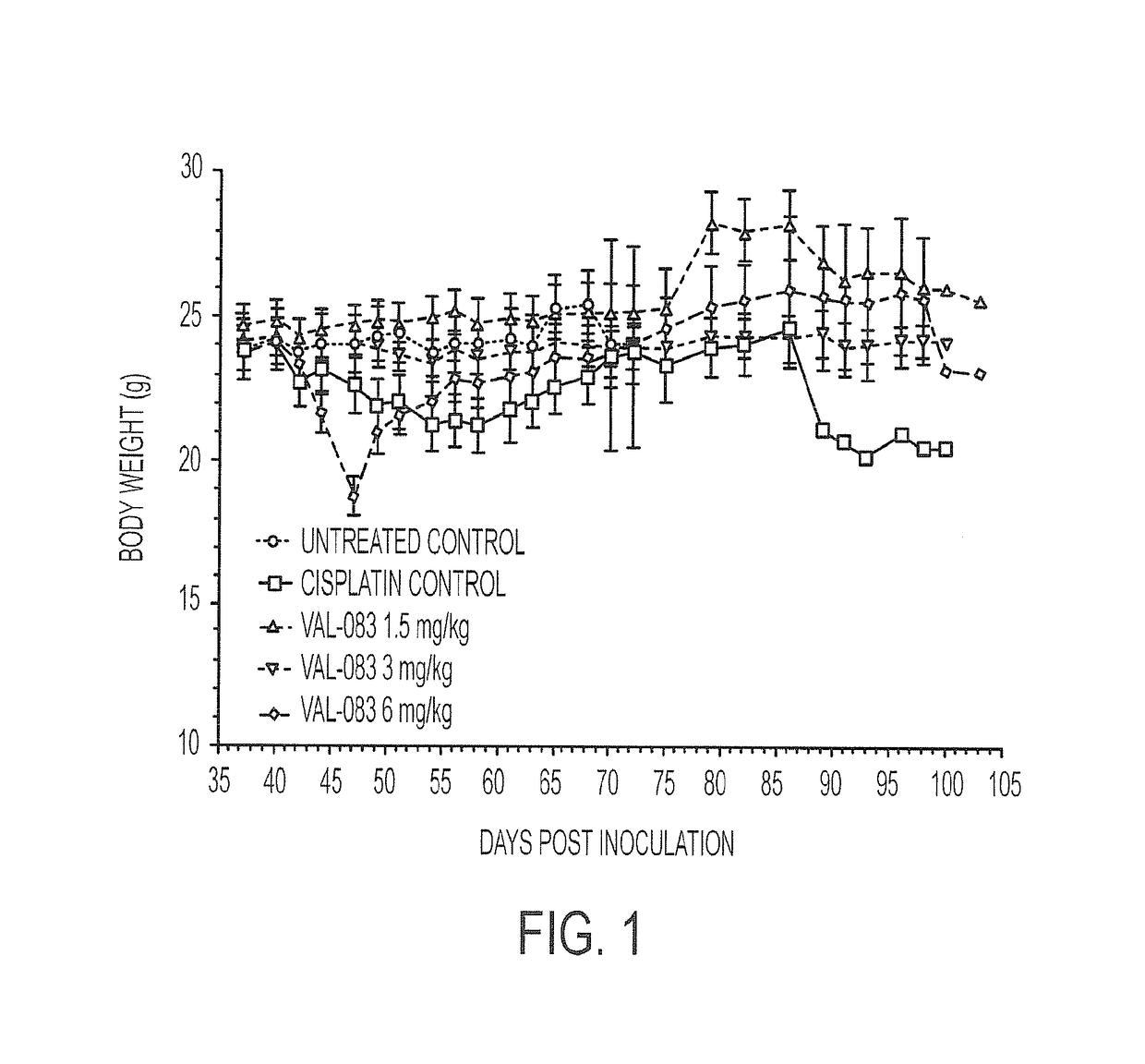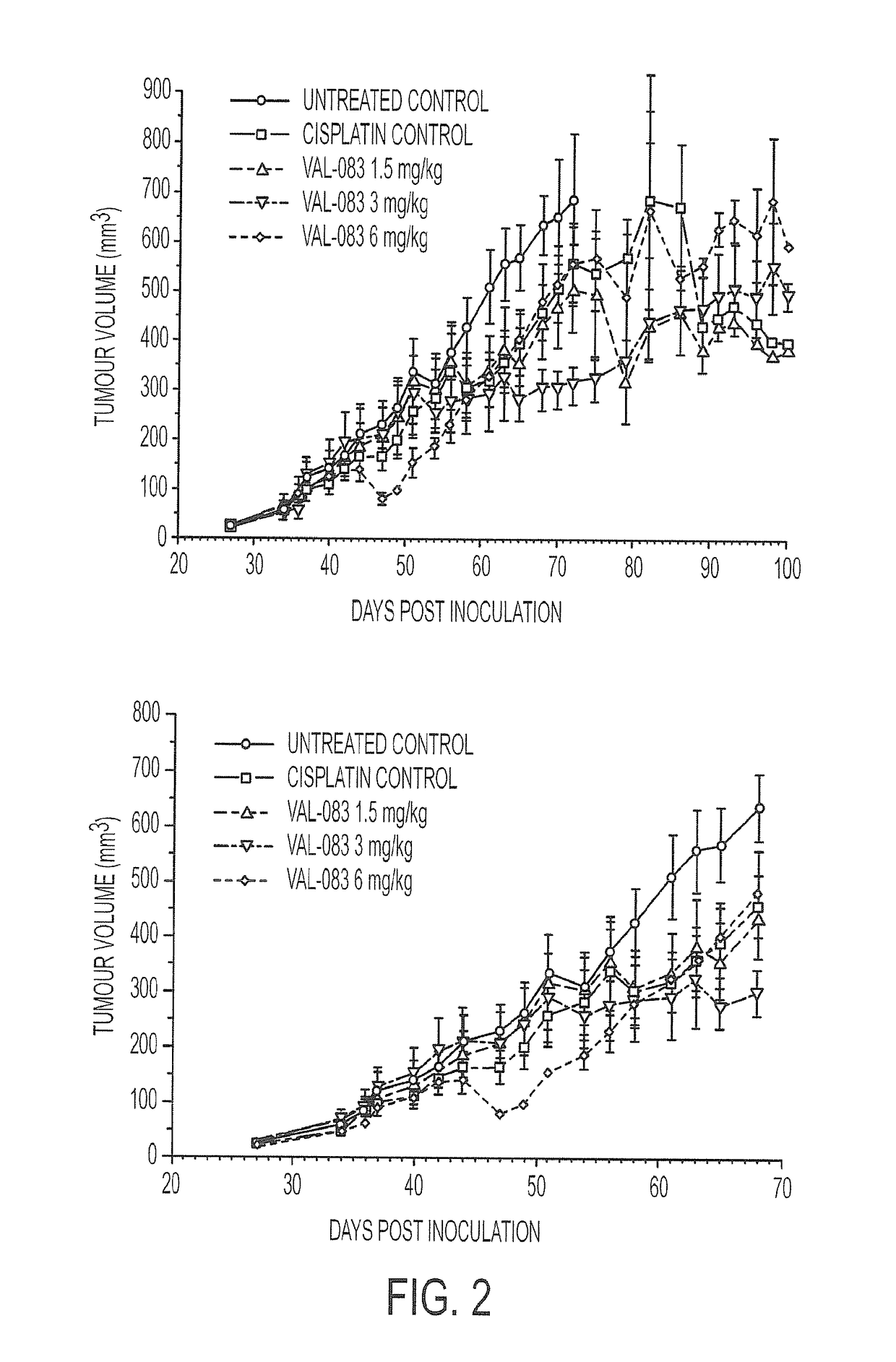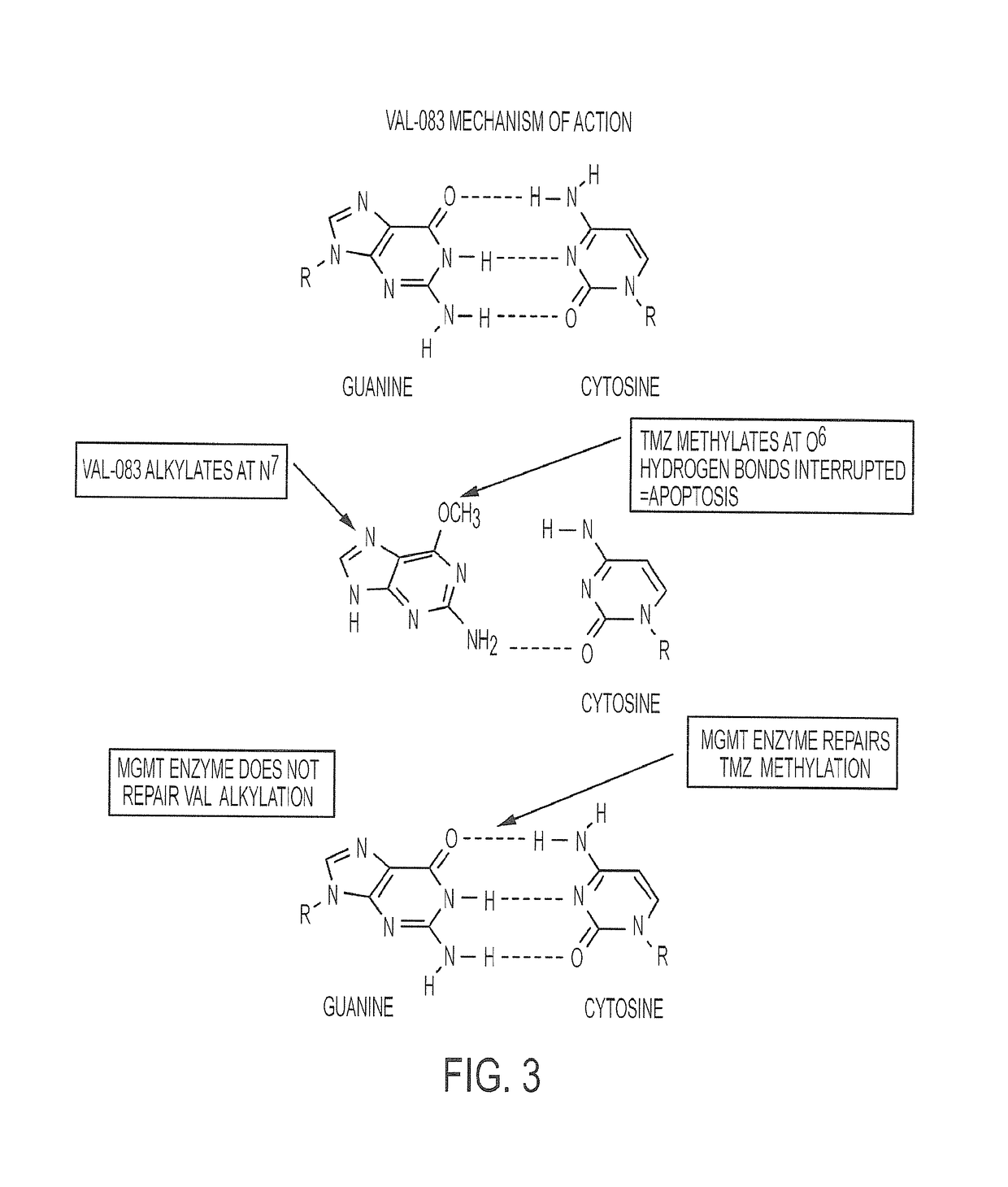Use of dianhydrogalactitol and analogs and derivatives thereof, together with radiation, to treat non-small-cell carcinoma of the lung and glioblastoma multiforme and suppress proliferation of cancer stem cells
- Summary
- Abstract
- Description
- Claims
- Application Information
AI Technical Summary
Benefits of technology
Problems solved by technology
Method used
Image
Examples
example 1
In Vivo Efficacy of Dianhydrogalactitol in the Treatment of Non-Small-Cell Lung Cancer Employing a Mouse Xenograft Model
Background
[1097]The median overall survival time for patients with stage IV non-small cell lung cancer (NSCLC) is 4 months, and 1- and 5-year survival is less than 16% and 2%, respectively. NSCLC is usually treated with surgery followed by treatment with either Tyrosine Kinase Inhibitors (TKIs) (e.g., erlotinib, gefitinib) or platinum-based regimens (e.g. cisplatin). TKIs have resulted in vastly improved outcomes for patients with EGFR mutations; however, TKI resistance has emerged as a significant unmet medical need, and long-term prognosis with platinum-based therapies is poor. Additionally, the incidence of brain metastases is high in patients with NSCLC with a poor prognosis.
[1098]Dianhydrogalactitol is a structurally unique bi-functional alkylating agent mediating interstrand DNA crosslinks at targeting N7 of guanine, thus differing in mechanism of action from...
example 2
Response to Dianhydrogalactitol With or Without Radiation Therapy in Primary Glioblastoma Multiforme Cultures
[1136]The standard of care for glioblastoma multiforme (GBM) patients is surgical resection followed by temozolomide (TMZ) and radiation (XRT). TMZ is most effective for a minority of patients that exhibit epigenetic inactivation of O6-methylguanine DNA methyltransferase (MGMT), a DNA repair enzyme that removes the methyl-group adducts that are caused by TMZ. Thus, adducts that are not subject to the DNA repair mechanism of MGMT might provide additional benefit to GBM patients, the majority of which express MGMT and are TMZ-resistant, or acquire resistance after TMZ administration. The N7 alkylating agent, dianhydrogalactitol (“VAL-083”), is not subject to MGMT mediated repair and might therefore be a more potent chemotherapeutic. Dianhydrogalactitol is a first-in-class alkylating agent that crosses the blood brain barrier and is currently in clinical trials for glioma patien...
example 3
Use of Dianhydrogalactitol to Treat Patients with Recurrent Malignant Glioma or Progressive Secondary Brain Tumor
[1168]Tumors of the brain are among the most challenging malignancies to treat. Median survival for patients with recurrent disease is <6 months for glioblastoma multiforme (GBM). Central Nervous System (CNS) metastases have evolved as a major contributor to cancer mortality based on improvements in systemic therapies that cannot reach tumors spreading to the brain.
[1169]Front-line systemic therapy is temozolomide but resistance due to O6-methylguanine-DNA-methyltransferase (MGMT) activity is implicated in poor outcomes. Such resistance vastly reduces survival.
[1170]Dianhydrogalactitol is a first-in-class bifunctional N7 DNA-alkylating agent that readily crosses the blood-brain barrier and accumulates in brain tissue. Dianhydrogalactitol causes interstrand DNA crosslinks at the N7-guanine (E. Institóris et al., “Absence of Cross-Resistance Between Two Alkylating Agents: B...
PUM
| Property | Measurement | Unit |
|---|---|---|
| Time | aaaaa | aaaaa |
| Time | aaaaa | aaaaa |
| Time | aaaaa | aaaaa |
Abstract
Description
Claims
Application Information
 Login to View More
Login to View More - R&D
- Intellectual Property
- Life Sciences
- Materials
- Tech Scout
- Unparalleled Data Quality
- Higher Quality Content
- 60% Fewer Hallucinations
Browse by: Latest US Patents, China's latest patents, Technical Efficacy Thesaurus, Application Domain, Technology Topic, Popular Technical Reports.
© 2025 PatSnap. All rights reserved.Legal|Privacy policy|Modern Slavery Act Transparency Statement|Sitemap|About US| Contact US: help@patsnap.com



